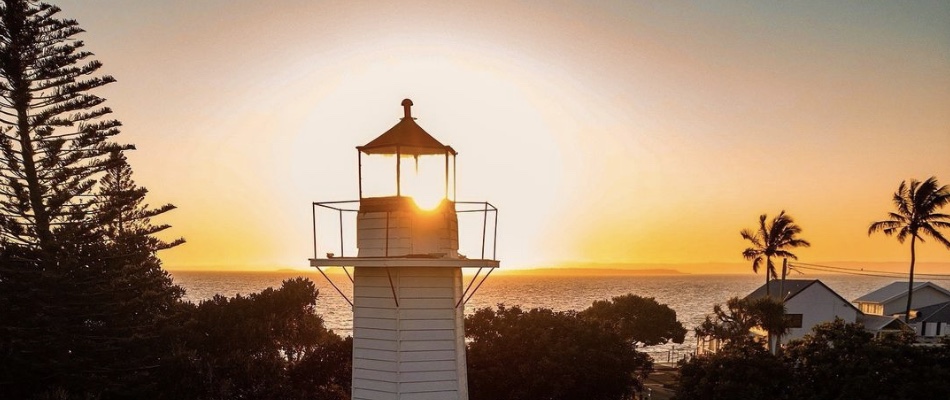
Location:
Cleveland Point Light, also known as Point Cleveland Light, is a lighthouse located on the north-eastern tip of Cleveland Point in Cleveland , an outer suburb to the east of Brisbane CBD. It overlooks Moreton Bay to the east and Raby Bay to the west.
GPS: Lat: 27° 30’ S : Long: 153° 17’ E
First Lit: 1865 (deactivated, relocated and replaced 1976)
Tower height: 12m, Elevation 14m
Original Lens: 3rd Order Chance Bros. Fresnel lens
Range: 13 nml (24 km)
Current Characteristic: A White or Red flash every three seconds depending on the sector: [Fl W.R. 3s]
History:
This lighthouse was constructed in 1864-1865 as a wooden hexagonal tower. It is one of only two surviving lighthouses of this form, the other being Old Burnett Head Light. A newer light, constructed of a concrete post, replaced it in 1976, and the old lighthouse was relocated a short distance away, where it stands today. The newer light was removed in 2009.
An early 1847 private beacon was replaced by a temporary government light in 1864, and then the permanent tower in 1865. The lens was upgraded twice, in 1874 and 1879. In 1934 the lighthouse was converted to electricity, and remained so until 1976 when it was deactivated and replaced by a concrete pile light constructed just 3 metres (9.8 ft) away. The original tower was moved away in 1979 and restored in 1987.
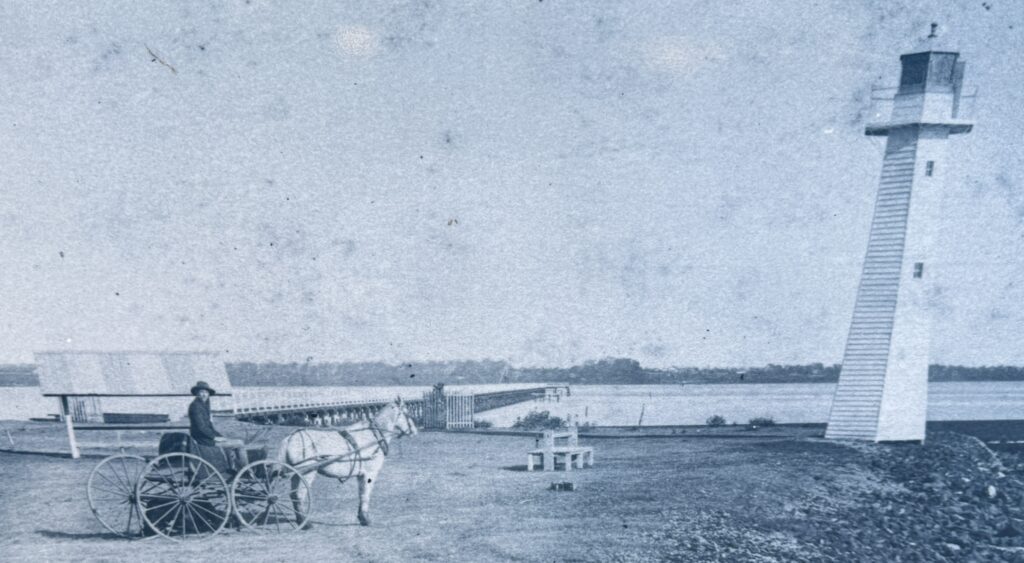
it’s just a distorted old photograph. Sorry!
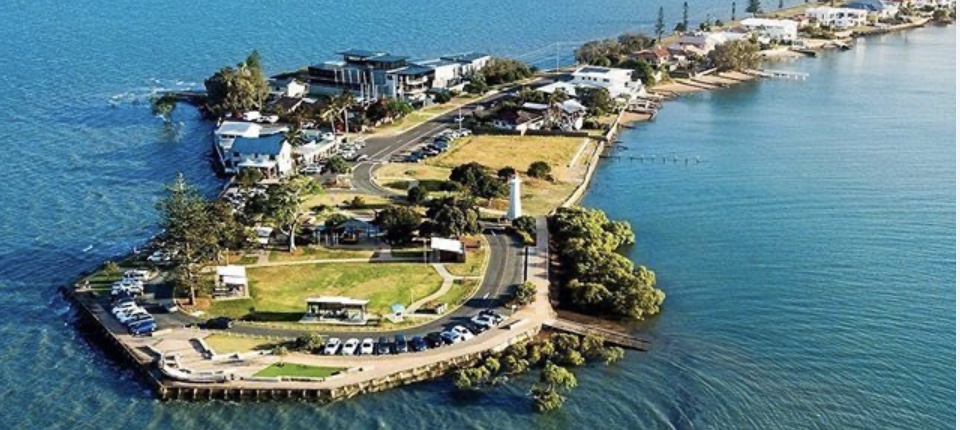
While timber frame and cladding construction is typical for the area and period, both the hexagonal form and the weatherboard cladding are unique. The tower is surmounted with a red painted lantern room and a hexagonal gallery. Both towers were easily accessible. The newer tower consisted of concrete posts supported by two vertical concrete bars. The old tower is easily accessible to the public as was the newer one, but entering is not allowed.
The Cleveland Point Lighthouse was the second light to be erected on this site, replacing an earlier beacon established in 1847.
This lighthouse was built in 1864 and though being the the typical timber framed Queensland lighthouse is unusual because it is hexagonal rather than round and is clad with weather boards instead of the metal cladding common elsewhere in this state.

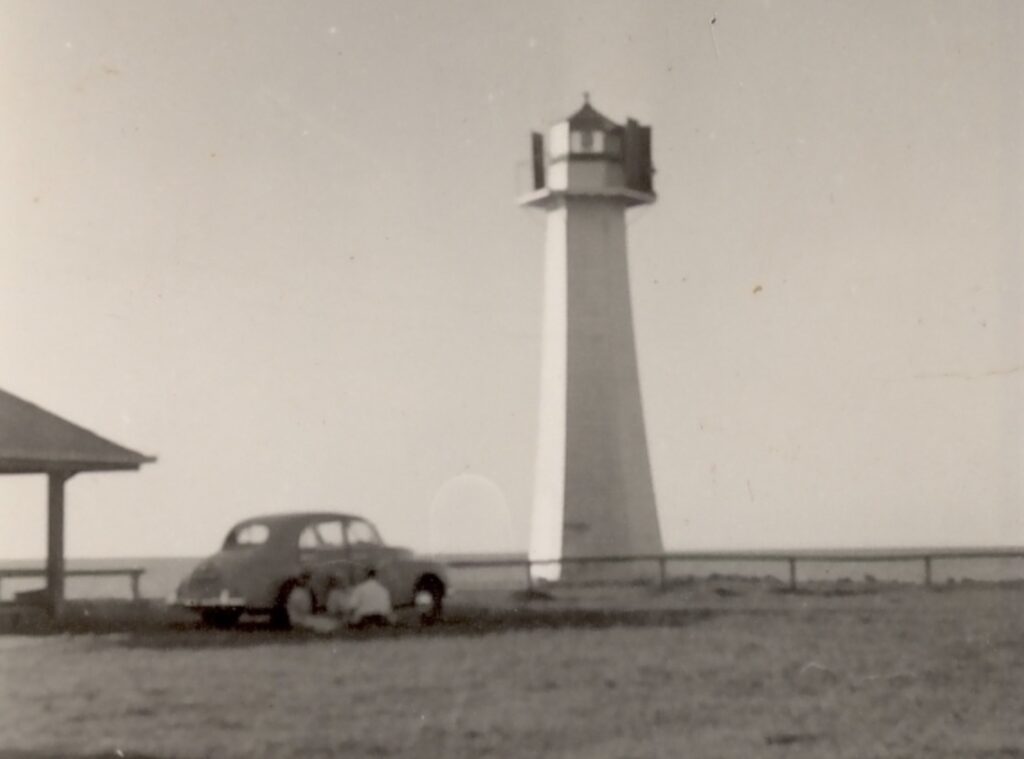

It was built to accommodate Cleveland, a once a thriving port in the middle of last century.
In 1872 the existing lens was replaced with the one from the Moreton Island light. Two red sectors were installed in 1920 to indicate shoals off Peel Island, Cleveland Point, Banana Island and Raby Bay. In 1934, the lighthouse was converted from kerosene to electric power. At this time the City Electric Light Company Limited became the responsible authority for the light.
The first local experiments in the use of laser beams as navigational aids were carried out from this lighthouse in 1969.
The light’s second keeper, James Troy 1877-1927, holds the Australian record for being the longest serving lightkeeper at one lighthouse.
In 1976, the lighthouse was moved to a new location 30 metres to make way for a new beacon. Here it stood until renovated by the Redlands Shire Council in 1978.
The first navigation aid on Cleveland Point was a beacon established in 1847, by Francis Edward Bigge, Member of the Legislative Assembly of New South Wales, at his expense, as part of his lobbying of Cleveland as the port for Moreton Bay. In the middle of the 19th century, small coastal steamboats became a main means of transport for farmers in Moreton Bay, specifically in Cleveland, Victoria Point, Redland Bay and along the Logan and Albert Rivers. Several lights were established around that period to assist navigation in Moreton Bay, notorious for its rocks and moving mudflats and sandbanks. In some places where no official light was established, locals would install their own lights, as was the case in Cleveland Point.
In the 1860s the Queensland Government decided to replace these lights with a permanent light. The first temporary government light was displayed in April 1864. The permanent light was constructed in early 1865. The original light source was a fixed kerosene operated light, visible for 14.5 kilometres (7.8 nmi). In 1874 a refurbished Chance Brothers Fresnel lens from Comboyuro Point Light on Moreton Island replaced the original lens. The apparatus was upgraded to a more powerful Chance Brothers lens in 1879. Two red sectors, indicating close by shoals were installed in 1920. In 1934 the lighthouse was converted to electricity and the City Electric Light Company Limited became the responsible operator. The light source was a round concentrated filament lamp.
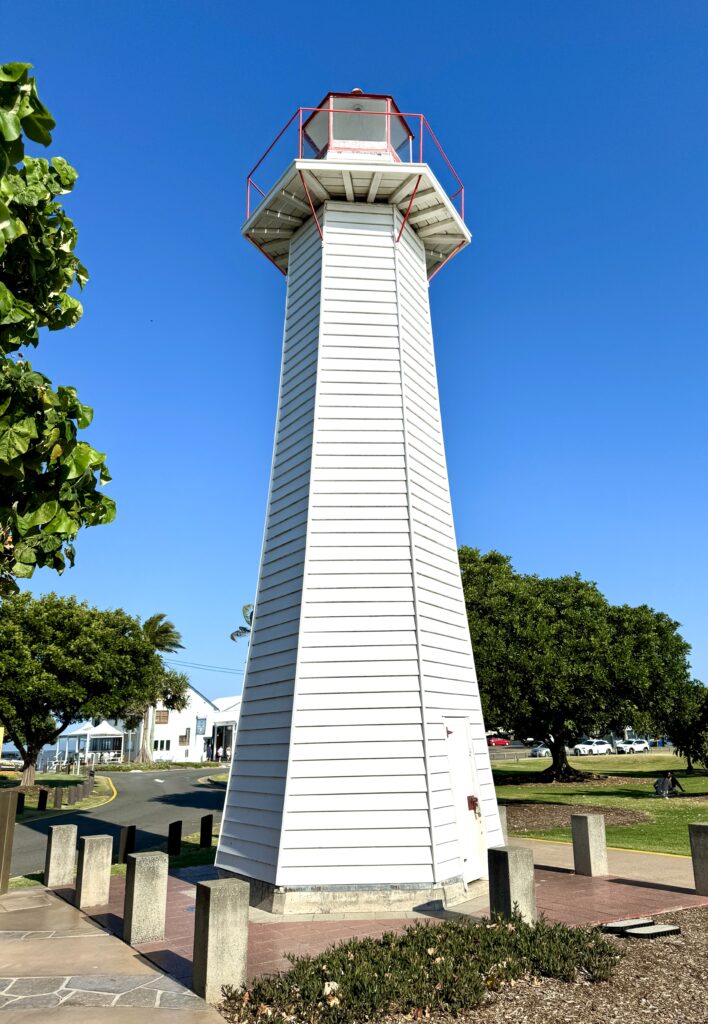
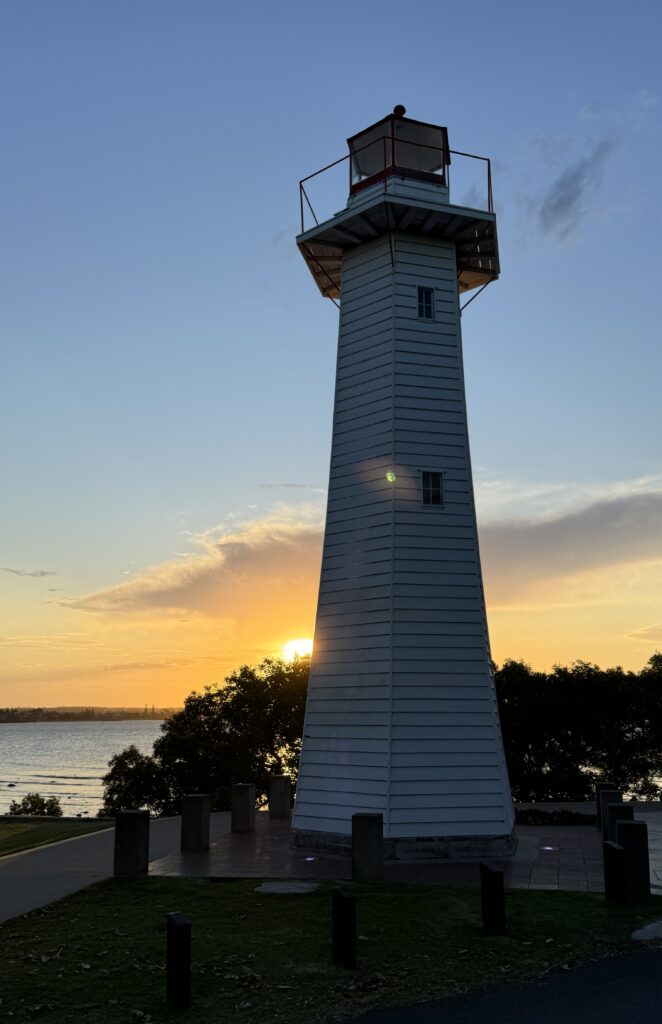

In 1969 the lighthouse took part in experiment in the use of laser beams as aid to navigation. In 1976 the lighthouse was deactivated and replaced by a concrete pile light which was constructed just 3 metres (9.8 ft) away.
In March 1976 the original lighthouse was moved away about 30 metres away. The Redland Shire Council restored the lighthouse in 1987.
Notable Lighthouse Keepers:
The first lighthouse keeper was Alfred Winship, who served from 1864 to 1877. The second keeper was James Troy, who served along with his family for 50 years until 1927, the longest-serving lightkeeper at one lighthouse in Australia. From 1927 to 1951 the keeper was Charles Klemm. Other keepers served for shorter periods after that.
Current Status:
The site where the old lighthouse is located is managed by the Redland City Council and is accessible to the public, but its interior is closed. The 1879 Chance Brothers lens is on display at the Redland Shire Council chambers in Cleveland. The operation and maintenance of the newer light are the responsibility of the Australian Maritime Safety Authority (AMSA).